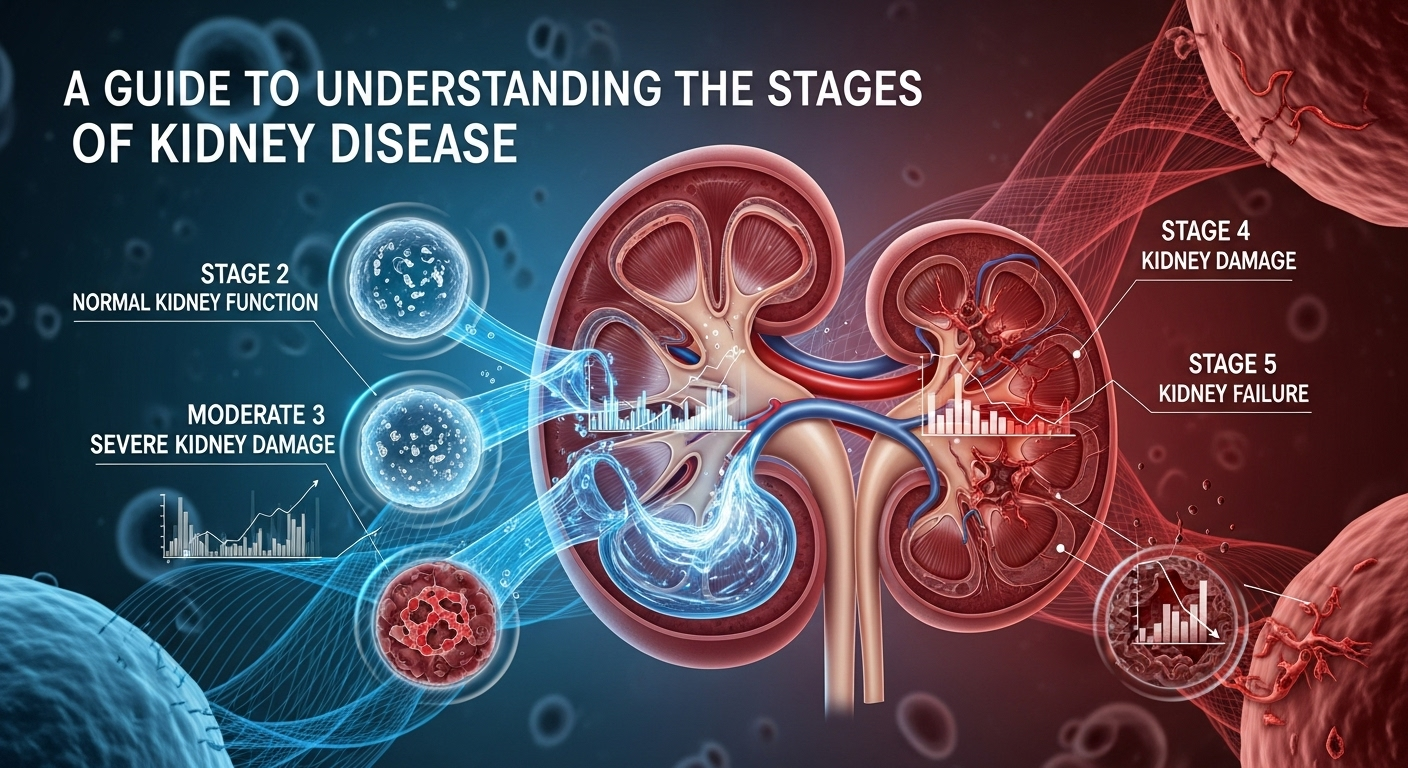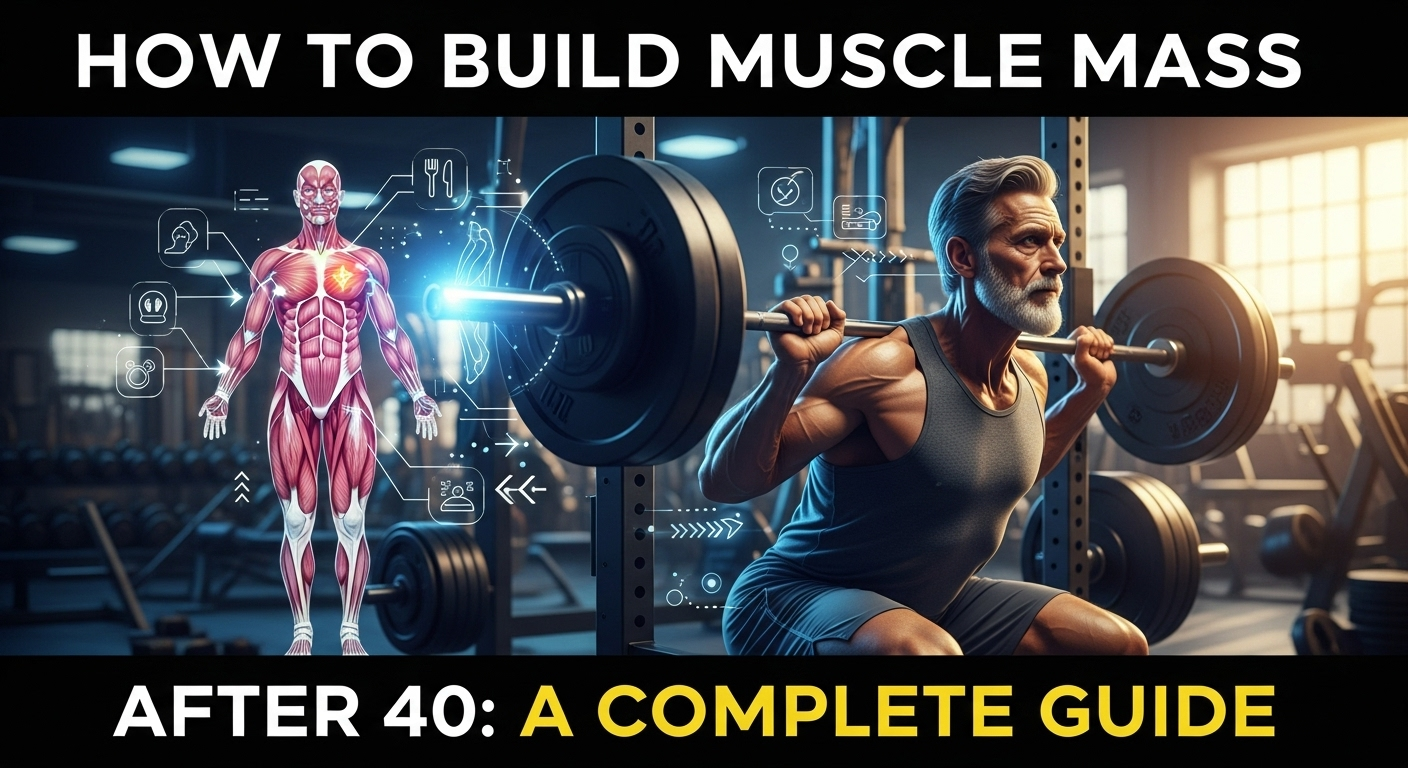In a world where medicine often focuses on common ailments like the flu or high blood pressure, there exists a vast, complex, and often overlooked universe of health conditions. These conditions affect millions of people worldwide, yet many have never heard of them. They are the "rare diseases," a category where the journey to a diagnosis can be long and arduous, and the path to treatment is frequently uncharted. The fundamental question for patients, families, and even many healthcare providers is, what is considered a rare genetic disorder? This question opens the door to understanding a significant and challenging area of human health, defined not just by its infrequency but by the unique genetic blueprints that cause it. This expert guide will demystify the world of rare genetic disorders, from their official definitions to the profound impact they have on human lives. Defining "Rare": A Matter of Numbers and Geography The term "rare" can feel subjective, but in the medical and regulatory world, it has a precise definition. These definitions are crucial because they unlock pathways for research funding, drug development, and patient support. However, the exact number that qualifies a disease as rare varies by country or region, creating a slightly different landscape depending on where you live. This numerical threshold is the first step in understanding the scope of these conditions. In the United States, the Orphan Drug Act of 1983 provides the benchmark. A disease is considered rare if it affects fewer than 200,000 people in the U.S. population. This legislation was a landmark achievement, creating financial incentives (like grants, tax credits, and market exclusivity) for pharmaceutical companies to develop "orphan drugs"—treatments for these small patient populations that might otherwise be ignored due to a lack of commercial profitability. Meanwhile, the European Union has a different, prevalence-based definition. A disease is defined as rare when it affects no more than 1 in 2,000 people. While the numbers seem different, both definitions serve the same purpose: to identify conditions that require special attention and resources. The paradox of rare diseases is that while each one is individually uncommon, collectively, they are not. It's estimated that there are over 7,000 identified rare diseases, and together they affect an estimated 300 million people worldwide. This means that nearly 1 in 10 people in some countries may be living with a rare disorder. The Genetic Foundation: When the Blueprint Has a Flaw The vast majority—about 80%—of rare diseases are genetic in origin. This means they are caused by an anomaly or "mutation" in an individual's DNA. Our DNA contains thousands of genes, each acting as a specific instruction for building and maintaining our bodies. When a gene is altered, the instruction it provides can become faulty, leading to a protein that doesn't work correctly or isn't produced at all. This single error can have cascading effects throughout the body, resulting in a genetic disorder. Understanding the genetic basis is key to diagnosis, family planning, and the development of future therapies. These disorders are not caused by lifestyle choices or environmental factors alone; they are written into a person's biological code from conception. The nature of the genetic change and how it is passed through families determines the type and characteristics of the disorder. 1. The Different Types of Genetic Mutations Genetic disorders arise from different kinds of errors in our DNA. Scientists categorize them into three main groups, which helps in diagnosing the condition and understanding its potential severity. Each type of mutation affects the genetic code in a unique way. Single-Gene Disorders: As the name suggests, these disorders are caused by a mutation in a single gene. They are often the most "straightforward" to trace through families because they follow predictable inheritance patterns. Think of a gene as a single recipe in a massive cookbook. If one critical recipe has a typo, the resulting dish (a protein) will be flawed. Examples of single-gene disorders include Cystic Fibrosis, Huntington's Disease, and Sickle Cell Anemia. Chromosomal Disorders: These occur when there is a change in the structure or number of chromosomes. Chromosomes are the structures that hold our genes, like volumes in a library. A chromosomal disorder can involve a missing chromosome, an extra chromosome (like in Down Syndrome, which is caused by an extra copy of chromosome 21), or large-scale deletions or rearrangements of a chromosome segment. These changes affect hundreds or even thousands of genes simultaneously, often leading to a wide range of developmental and health issues. Complex or Multifactorial Disorders: These are the most complicated. They result from a combination of mutations in multiple genes interacting with environmental factors and lifestyle choices. While a person may be genetically predisposed to a condition, it might not manifest without certain environmental triggers. Many common chronic diseases like heart disease and diabetes are multifactorial, but so are some rare conditions. This complexity makes them much harder to diagnose and predict. 2. Understanding Inheritance Patterns How a genetic disorder is passed from one generation to the next is described by its inheritance pattern. This is a critical piece of information for families, as it helps determine the risk of future children being affected. Genetic counselors specialize in explaining these complex patterns. Autosomal Recessive: For a person to have a disorder with this inheritance pattern, they must inherit two copies of the mutated gene—one from each parent. The parents are typically "carriers," meaning they have one copy of the mutation but do not show symptoms of the disorder. With each pregnancy, there is a 25% chance the child will have the disorder, a 50% chance they will be a carrier like the parents, and a 25% chance they will inherit two normal genes. Cystic Fibrosis is a classic example. Autosomal Dominant: In this case, only one copy of the mutated gene is needed to cause the disorder. A person with the condition has a 50% chance of passing the mutated gene (and thus the disorder) to each child. The gene is "dominant" over
The Ultimate Healthy Diet Plan for Active Men (2024)
— In a world that constantly demands peak performance, an active man's body is his greatest asset. Whether you're hitting the gym, crushing it on the running trail, or engaging in competitive sports, what you put into your body is just as important as the effort you exert. A generic diet simply won't cut it. You need a targeted nutritional strategy designed to fuel your activity, build lean muscle, and accelerate recovery. This is precisely where a dedicated healthy diet plan for active men becomes not just beneficial, but absolutely essential for unlocking your full potential. This comprehensive guide will break down everything you need to know to build a sustainable and powerful eating regimen that supports your active lifestyle in 2024 and beyond. Understanding the Unique Nutritional Needs of Active Men An active man is a high-performance machine, and like any machine, it requires premium fuel. The physiological demands of regular, intense physical activity mean your nutritional requirements are significantly different from those of a sedentary individual. Your metabolism runs at a higher rate, not just during exercise but for hours afterward, a phenomenon known as excess post-exercise oxygen consumption (EPOC). This elevated metabolic rate means you burn more calories throughout the day and require a greater overall energy intake to maintain your weight and energy levels. Furthermore, every workout creates microscopic tears in your muscle fibers. This is a natural and necessary process for muscle growth, but it requires a steady supply of specific nutrients, primarily protein, to repair and rebuild those fibers stronger than before. Without adequate nutrition, this recovery process is hindered, leading to fatigue, poor performance, and an increased risk of injury. A proper diet plan ensures your body has all the raw materials it needs for this crucial cycle of breakdown and repair, allowing you to consistently train hard and see results. Beyond just energy and muscle repair, the increased physical stress on an active man’s body elevates the need for various micronutrients. You lose essential electrolytes like sodium and potassium through sweat, and the increased energy production can deplete B vitamins. Minerals like magnesium and zinc become critical for muscle function and hormone regulation, respectively. Ignoring these details can lead to performance plateaus and long-term health issues. Therefore, a successful diet plan must be holistic, addressing not just the macronutrients (protein, carbs, and fats) but also the vital micronutrients that support every bodily function. The Core Components of Your Diet Plan: Macronutrients Macronutrients are the cornerstone of any diet, providing the energy and building blocks your body needs to function. For an active man, the ratio and quality of these "macros" are paramount. Understanding the role of each one allows you to tailor your intake for specific goals, whether it's building mass, improving endurance, or shedding fat. Protein: The Building Block of Muscle Protein is arguably the most crucial macronutrient for an active man. Its primary role is to provide the amino acids necessary for muscle protein synthesis—the process of repairing and building new muscle tissue. After a strenuous workout, your body is in a state of breakdown; consuming adequate protein flips the switch to a state of rebuilding. This is non-negotiable for anyone looking to increase strength, improve body composition, or simply recover effectively between training sessions. The question of "how much" protein is critical. General guidelines for active men range from 1.6 to 2.2 grams of protein per kilogram of body weight (or about 0.7 to 1.0 grams per pound). For an 80kg (176 lbs) man, this translates to 128-176 grams of protein per day. Spreading this intake throughout the day—in 4-5 meals or snacks—is more effective than consuming it in one or two large meals, as it keeps a steady supply of amino acids available for your muscles. Focus on high-quality, complete protein sources that contain all essential amino acids. Lean Meats: Chicken breast, turkey, lean cuts of beef and pork. Fish: Salmon, tuna, cod, and sardines (rich in omega-3s). Eggs: A nutritional powerhouse, providing high-quality protein and essential nutrients. Dairy: Greek yogurt, cottage cheese, milk, and whey protein supplements. Plant-Based Options: Lentils, chickpeas, black beans, tofu, tempeh, and quinoa. Carbohydrates: The Primary Fuel Source Carbohydrates have been unfairly villainized in many fad diets, but for an active man, they are the primary and most efficient source of fuel. When you consume carbohydrates, your body breaks them down into glucose, which is either used immediately for energy or stored in your muscles and liver as glycogen. During exercise, especially high-intensity activities, your body relies heavily on these glycogen stores to power your performance. Depleted glycogen is a primary cause of hitting “the wall” during endurance events. The key is to choose the right kind of carbohydrates. Focus on complex carbohydrates, which are digested more slowly and provide a sustained release of energy. These are typically higher in fiber, vitamins, and minerals. Simple carbohydrates (like sugary drinks and processed snacks) can be useful for a quick energy boost right before or during a long workout, but they should not form the bulk of your intake. Aim to consume most of your carbohydrates around your workouts to ensure your energy stores are topped off and replenished efficiently. Whole Grains: Oats, brown rice, quinoa, whole-wheat bread, and pasta. Starchy Vegetables: Sweet potatoes, potatoes, corn, and peas. Legumes: Lentils, beans, and chickpeas. Fruits: Bananas, berries, apples, and oranges provide quick-digesting carbs and valuable micronutrients. Healthy Fats: More Than Just Calories Fat is the most calorie-dense macronutrient, but its role extends far beyond just providing energy. Healthy fats are essential for a number of critical bodily functions, including the production of key hormones like testosterone, which is vital for muscle growth, energy levels, and overall male health. Fats also play a crucial role in absorbing fat-soluble vitamins (A, D, E, and K) and maintaining the health of your cells and brain. Avoiding fat is a common mistake that can sabotage your health and performance. The focus should be on incorporating unsaturated fats (monounsaturated and
Remembering Brett James: ‘Jesus, Take the Wheel’ Writer
The world of country music is in mourning today. On a day marked by significant developments, from major policy shifts concerning the H1B visa to the tragic and sudden loss of Grammy-winning songwriter Brett James and pilot Travis Decker in a devastating plane crash, the industry and its fans are grappling with a profound sense of loss. James, the lyrical genius behind some of modern country’s most enduring anthems, has left an indelible mark on the hearts of millions. This article serves as a tribute to his life, his incredible body of work, and the legacy he leaves behind. A Titan of Country Music: The Life and Career of Brett James Brett James was not just a songwriter; he was a storyteller for a generation. A recipient of the prestigious Grammy Award, his name is synonymous with the heart and soul of Nashville’s music scene. For decades, he was the silent force behind the radio waves, crafting lyrics and melodies that became the soundtrack to countless lives. His ability to distill complex human emotions—love, loss, faith, and hope—into a three-minute song was a rare and precious gift. He was a master craftsman, respected by his peers and adored by the artists who turned his words into chart-topping hits. His journey into the upper echelons of songwriting was one of passion and persistence. While many knew him for his prolific output, his path was built on years of honing his craft, countless writing sessions, and an unwavering belief in the power of a good song. He navigated the competitive landscape of the music industry with a quiet confidence, letting his work speak for itself. This dedication paid off, establishing him as one of the most sought-after and reliable hitmakers in Nashville, a city built on the very foundation of masterful songwriting. The influence of Brett James extends far beyond the number of awards on his shelf or the plaques on his wall. He helped define the sound of contemporary country music, blending traditional storytelling with modern sensibilities. His compositions were versatile, fitting seamlessly into the repertoires of a wide range of artists, from powerhouse vocalists to seasoned country rockers. His legacy is not just in the songs he wrote, but in the artists he elevated and the genre he helped shape. He was a pillar of the creative community, and his absence will be felt for years to come. The Legacy in Lyrics: A Look at His Most Iconic Hits When discussing the monumental career of Brett James, one song inevitably comes to the forefront: “Jesus, Take the Wheel.” This powerful ballad, which launched Carrie Underwood into superstardom, became more than just a hit; it became a cultural phenomenon. It resonated deeply with listeners from all walks of life, offering a message of surrender and faith in times of crisis. The song’s massive success, including its Grammy win for Best Country Song, was a testament to James’s unparalleled ability to tap into the universal human experience. But to define Brett James by a single song, however iconic, would be to overlook the staggering breadth and depth of his catalog. He was a hit machine, penning hundreds of songs for some of the biggest names in music. His work consistently topped the charts, demonstrating a remarkable versatility and an innate understanding of what makes a song not just good, but unforgettable. He was the secret ingredient behind many artists’ greatest successes, a testament to his collaborative spirit and his genius for melody and rhyme. His catalog includes a diverse array of hits that showcase his range as a writer. Whether it was an upbeat summer anthem, a heart-wrenching ballad, or a song of deep spiritual reflection, James could do it all. His contributions have become a fundamental part of the country music canon. Some of his notable works include: Songs that became career-defining moments for artists. Tracks that dominated country radio for weeks on end. Lyrics that have been quoted, shared, and tattooed by devoted fans. The Story Behind Jesus, Take the Wheel The song “Jesus, Take the Wheel” is a masterclass in narrative songwriting. It tells the vivid story of a young mother facing a moment of sheer terror, a situation that forces her to let go of control and place her trust in a higher power. This narrative structure, combined with its powerful emotional core, is what made the song so incredibly effective. It wasn’t just a song about faith; it was a story about a moment of profound, life-altering vulnerability that anyone could understand, regardless of their personal beliefs. Its impact was immediate and long-lasting. The song not only secured a Grammy for Brett James and his co-writers but also solidified Carrie Underwood’s place as a country music powerhouse following her American Idol win. It transcended the country charts, becoming a crossover hit and an anthem of hope for millions. The song remains a cornerstone of modern country music, a perfect example of how a well-told story, set to the right melody, can move the world. It cemented James’s reputation as a writer who could deliver not just hits, but timeless classics. A Chart-Topping Pen: Beyond the Signature Song While “Jesus, Take the Wheel” may be his most famous creation, Brett James’s discography is a veritable “greatest hits” collection of 21st-century country music. His consistency was astounding, and his work with a diverse roster of artists highlights his adaptable talent. He understood how to write for an artist, tailoring his lyrics and style to fit their voice and persona while retaining his own signature emotional honesty. This skill made him a go-to writer for a who’s who of country stars. To truly appreciate the scope of his influence, one only needs to look at the chart history of the past two decades. His name appears in the credits of an astonishing number of fan-favorite songs. The table below offers just a small snapshot of his incredible contributions to the genre. Song Title Recording Artist
A Guide to Understanding the Stages of Kidney Disease
Your kidneys are among the body's most vital and hardworking organs. Functioning as sophisticated filtration systems, they tirelessly cleanse your blood, manage fluid balance, regulate blood pressure, and support bone health, all while operating silently in the background. However, when their function begins to decline gradually over time, a condition known as Chronic Kidney Disease (CKD) can develop. This condition is often progressive, moving through distinct phases that can be confusing and alarming. Gaining a clear and comprehensive perspective is the first and most crucial step toward managing the condition effectively. This comprehensive guide is designed to demystify the process, providing a clear path to understanding the stages of kidney disease and empowering you with the knowledge to navigate your health journey. What is Chronic Kidney Disease (CKD)? Chronic Kidney Disease, often abbreviated as CKD, is a long-term condition characterized by the gradual loss of kidney function over months or years. Unlike Acute Kidney Injury (AKI), which involves a sudden loss of kidney function, CKD is a slow and often silent decline. The primary role of the kidneys is to filter waste products and excess fluid from the blood, which are then excreted in the urine. When the kidneys are damaged, they become less efficient at this filtration process, leading to a build-up of waste and fluid in the body that can cause a cascade of health problems. The importance of the kidneys cannot be overstated. Beyond filtration, they perform several critical functions: Regulating blood pressure by managing fluid levels and releasing hormones. Producing an active form of Vitamin D, which is essential for bone health and calcium absorption. <strong>Controlling the production of red blood cells</strong> through the hormoneerythropoietin*. Balancing the body&#x27;s electrolytes, such as sodium, potassium, and phosphate. When CKD develops, all of these functions can become impaired. The disease is "staged" based on the level of kidney function remaining. This staging system helps doctors determine the severity of the disease, predict its rate of progression, and develop an appropriate management plan. By understanding which stage you or a loved one is in, you can better grasp the immediate health priorities and the long-term outlook, making you an active participant in your own care. The Key Metric: Understanding Glomerular Filtration Rate (eGFR) The cornerstone for staging kidney disease is a measurement called the Glomerular Filtration Rate, or GFR. The glomeruli are tiny filters within your kidneys—millions of them—that perform the initial step of cleaning your blood. The GFR is a measure of how much blood these filters clean each minute. A healthy pair of kidneys can filter approximately 120 milliliters (mL) of blood per minute. A direct GFR measurement is complex, so doctors typically use a formula to calculate an estimated Glomerular Filtration Rate (eGFR). To calculate your eGFR, your doctor will order a simple blood test that measures the level of creatinine, a waste product generated from muscle metabolism. This creatinine level is then plugged into a mathematical formula along with other variables like your age, sex, and body size. Historically, race was also a factor in the calculation, but modern guidelines are moving away from this practice to promote health equity and improve accuracy. The resulting eGFR number gives your healthcare provider a clear and reliable estimate of your kidney function percentage. The eGFR is the single most important number for staging CKD. Think of it as a percentage score for your kidneys. An eGFR of 75 means you have approximately 75% of your kidney function. As the eGFR number decreases, it signifies that the kidneys are becoming less effective at their job. This number allows doctors to classify the disease into one of five stages, track its progression over time, and make critical decisions about treatment, diet, and when to prepare for advanced therapies like dialysis or transplantation. A Detailed Breakdown of the 5 Stages of Kidney Disease Understanding what each stage means is vital for managing expectations and taking the right actions at the right time. The stages are primarily defined by the eGFR level, but the presence of kidney damage (such as protein in the urine, known as albuminuria) is also a critical factor, especially in the early stages. Stage 1: Kidney Damage with Normal or High GFR In Stage 1 CKD, the eGFR is 90 mL/min or higher, which is considered normal or even high kidney function. A person is only diagnosed with Stage 1 if they have other markers of kidney damage. This evidence could be the persistent presence of protein or blood in the urine, abnormalities detected on an ultrasound or CT scan (like polycystic kidney disease), or a family history of genetic kidney disease. Essentially, the kidneys are still working at or near full capacity, but there is underlying damage that signals a problem. Because kidney function is still good, symptoms are almost always absent in Stage 1. Most people are completely unaware they have a problem unless it is discovered incidentally during routine urine or blood tests for another condition. The primary goal of management at this stage is not to treat kidney failure but to aggressively manage the underlying cause of the damage to slow or halt its progression. This often involves strict control of blood pressure, managing blood sugar levels in people with diabetes, adopting a healthy lifestyle, and avoiding medications that can harm the kidneys (nephrotoxic drugs). Stage 2: Kidney Damage with Mildly Decreased GFR Stage 2 CKD is defined by an eGFR between 60 and 89 mL/min, coupled with evidence of kidney damage. This represents a mild decline in kidney function. Just like in Stage 1, the kidneys are still performing their essential tasks relatively well, and the body can effectively compensate for the slight loss in filtration capacity. It is a critical juncture where proactive management can have a significant long-term impact on the health of your kidneys. Symptoms remain rare in Stage 2, although some individuals might experience high blood pressure as one of the first signs of trouble. The focus of
Breathe Easy: Respiratory Illness Prevention Guide
In an ideal world, every breath we take would be clean, fresh, and invigorating. However, reality presents a landscape filled with invisible challenges: viruses, bacteria, pollutants, and allergens, all waiting for an opportunity to compromise our respiratory system. From the common cold that disrupts a work week to more serious conditions like influenza or pneumonia, respiratory illnesses are a persistent threat to our well-being. The good news is that we are not defenseless. By adopting a proactive and informed approach, you can significantly reduce your risk and fortify your body's natural defenses. These comprehensive prevention tips for respiratory illnesses are your best defense, serving as a practical guide to help you and your family navigate the seasons with greater confidence and health. This guide will empower you with the knowledge to build a resilient respiratory system, one healthy habit at a time. Breathe Easy: A Comprehensive Respiratory Illness Prevention Guide The Cornerstone of Prevention: Mastering Personal Hygiene The first line of defense against respiratory pathogens is not a complex medical procedure or an expensive supplement; it’s the consistent practice of good personal hygiene. Most respiratory viruses and bacteria are transmitted through droplets released when an infected person coughs, sneezes, or talks. These droplets can either be inhaled directly or can land on surfaces, where they can be picked up by our hands. From there, it’s a short trip to our eyes, nose, or mouth—the primary gateways for germs to enter the body. Therefore, mastering simple yet powerful hygiene habits is the single most effective, low-cost strategy to interrupt this chain of transmission. This isn't just about what you do when you feel sick; it’s about creating a daily routine that protects you and those around you. Think of it as building a shield. Every time you wash your hands correctly or cover a cough, you are reinforcing that shield, making it harder for opportunistic germs to find a way in. Consistency is the key. A single instance of forgetting to wash your hands after touching a public doorknob could be the one that leads to infection. By internalizing these practices, you transform them from conscious efforts into second nature, creating a formidable barrier against a wide array of respiratory illnesses. The profound impact of hygiene was demonstrated on a global scale during the COVID-19 pandemic, but its principles have been a cornerstone of public health for over a century. It's a testament to the fact that the simplest actions often yield the most significant results. Integrating these habits into your life doesn't just protect you during flu season or an outbreak; it provides year-round protection against countless pathogens, ensuring your respiratory system remains as healthy as possible. The Art of Effective Handwashing Handwashing is more than a quick rinse under the tap. To be effective, it must be thorough. The U.S. Centers for Disease Control and Prevention (CDC) recommends washing with soap and water for at least 20 seconds—roughly the time it takes to sing the “Happy Birthday” song twice. The friction from scrubbing, combined with the chemical properties of soap, works to break down the lipid envelope that surrounds many viruses, including influenza and coronaviruses, rendering them inactive and easily washed away. Make it a non-negotiable routine to wash your hands at critical moments: Before preparing or eating food. After using the restroom. After returning home from a public place (grocery store, office, public transport). After blowing your nose, coughing, or sneezing. Before and after caring for someone who is sick. When soap and water are not available, an alcohol-based hand sanitizer with at least 60% alcohol is a suitable alternative. Apply enough sanitizer to cover all surfaces of your hands and rub them together until they are dry. Mastering Respiratory Etiquette When you cough or sneeze, you can project respiratory droplets several feet. If you are infectious (even without knowing it), you are actively spreading germs into the air and onto surfaces. The best practice is to always cover your mouth and nose with a tissue, and then immediately dispose of the tissue in a closed bin. If a tissue isn’t available, cough or sneeze into the crook of your elbow, not into your hands. This simple act prevents you from contaminating your hands, which are a primary vehicle for spreading germs to other surfaces and people. Teaching this "vampire cough" to children from a young age is an excellent way to instill lifelong healthy habits. Furthermore, during periods of high community transmission of illnesses like the flu or COVID-19, wearing a high-quality, well-fitting mask in crowded indoor spaces provides an additional layer of protection, both for you and for others. It contains your own respiratory droplets and filters the air you breathe in, significantly reducing the likelihood of transmission. Avoid Touching Your Face: The T-Zone Rule The average person touches their face dozens, if not hundreds, of times per hour, often without even realizing it. This subconscious habit is a direct route for germs from your hands to enter your body. Your eyes, nose, and mouth form what is often called the “T-Zone,” the mucous membranes that are most vulnerable to infection. Even with diligent handwashing, you can pick up germs between washes. Therefore, making a conscious effort to keep your hands away from your T-Zone is a critical preventative measure. Breaking this habit can be challenging. Start by simply becoming aware of how often you do it. Place sticky notes on your computer monitor or desk as a reminder. If you have an itch on your face, try to use a clean tissue instead of your bare fingers. Reducing face-touching effectively closes one of the most common entry points for respiratory pathogens, complementing your hand hygiene efforts and making your overall defense strategy much more robust. Bolstering Your Body's Natural Defenses: The Immune System While external barriers like hygiene are crucial, your ultimate protection against respiratory illness comes from within: your immune system. This complex network of cells, tissues, and organs works tirelessly to identify
How to Build Muscle Mass After 40: A Complete Guide
Hitting your 40s often comes with a new perspective on health and fitness. The carefree metabolism of your 20s may feel like a distant memory, and you might notice that maintaining, let alone building, muscle is becoming a tougher challenge. You're not imagining it. Biological changes, including hormonal shifts and a natural decline in muscle synthesis, make the process different. However, the idea that your best physical years are behind you is a myth. The key to success lies in a smarter, more strategic approach. This comprehensive guide will show you exactly how to build muscle mass after 40, proving that age is truly just a number when armed with the right knowledge and dedication. Understanding the "Over 40" Challenge: Sarcopenia and Hormonal Shifts Before diving into the "how," it's crucial to understand the "why." Why does building muscle feel different after 40? The primary culprit is a process called sarcopenia, the age-related involuntary loss of muscle mass, strength, and function. This process can begin as early as your 30s and accelerates with each passing decade if left unchecked. It's a natural part of aging, but "natural" does not mean it's uncontrollable. Resistance training is the single most effective antidote to sarcopenia, sending a powerful signal to your body to preserve and build new muscle tissue. Hormonal changes also play a significant role. For men, testosterone levels, a key hormone for muscle protein synthesis, begin a slow and steady decline. For women, the approach of perimenopause and menopause brings fluctuations and an eventual drop in estrogen and progesterone. These hormones do more than just regulate reproductive health; they also influence muscle repair, bone density, and fat distribution. A decrease in these hormones can make it harder to recover from workouts and easier to store fat, creating a more challenging environment for muscle growth. However, this is not a doomsday scenario. It’s simply a change in the rules of the game. Your body is still incredibly capable of adapting and growing stronger. Understanding these biological shifts allows you to work with your body, not against it. It means your training, nutrition, and recovery must be more intentional and precise than ever before. With a strategic plan, you can effectively counteract these changes and build a stronger, more resilient physique than you had in your younger years. The Foundation: Progressive Overload and Strategic Strength Training If there is a single, non-negotiable principle for building muscle at any age, it is progressive overload. This principle states that for a muscle to grow, it must be forced to adapt to a tension that is above and beyond what it has previously experienced. After 40, this principle becomes even more critical. Your body requires a clear and consistent signal that muscle is not a "luxury" it can afford to lose but a "necessity" it must build to meet the demands you place on it. Without progressive overload, your workouts are simply exercise, not training. Simply going to the gym and lifting the same weights for the same number of reps week after week will lead to a plateau. To create the stimulus for growth, you must systematically increase the challenge over time. This can be achieved in several ways: increasing the weight you lift, performing more repetitions or sets with the same weight, reducing rest times between sets, or improving your form and range of motion. The goal is consistent, measurable progress, no matter how small. The foundation of your muscle-building program should be built around strength training, specifically using resistance. While cardiovascular exercise is vital for heart health, it does not provide the specific stimulus needed for significant muscle hypertrophy (growth). A well-structured strength training routine, performed consistently 2-4 times per week, is the cornerstone of how to build muscle mass after 40. Choosing the Right Exercises The most efficient way to structure your workouts is by prioritizing compound movements. These are multi-joint exercises that work several muscle groups simultaneously. Think of them as the biggest "bang for your buck" exercises. Examples include squats, deadlifts, bench presses, overhead presses, pull-ups, and rows. They trigger a greater hormonal response (including growth hormone and testosterone) and burn more calories compared to isolation exercises, making them incredibly effective for overall strength and muscle development. While compound lifts should form the core of your program (about 80%), isolation exercises also have their place. These single-joint movements, such as bicep curls, tricep extensions, and leg extensions, are excellent for targeting specific muscles that may be lagging or for adding extra volume to a muscle group without overly taxing your central nervous system. A balanced program incorporates both. For example, a workout might start with heavy squats (compound), followed by lunges (compound/accessory), and finish with leg curls and calf raises (isolation). Structuring Your Workouts for Longevity As you age, recovery becomes just as important as the workout itself. Overtraining is a real risk and can lead to injury, burnout, and stalled progress. Therefore, structuring your weekly routine to allow for adequate rest is paramount. For many people over 40, a full-body routine performed three times a week on non-consecutive days (e.g., Monday, Wednesday, Friday) is an excellent choice. This frequency allows you to stimulate all major muscle groups multiple times per week while providing 48 hours of recovery between sessions for repair and growth. Alternatively, you could opt for a split routine, such as an "Upper/Lower" split. This involves training the upper body on one day and the lower body on another, often performed over four days a week (e.g., Upper, Lower, Rest, Upper, Lower). This allows for more volume and focus on individual muscle groups per session but requires a greater weekly time commitment. The best split is the one you can adhere to consistently. The key is to listen to your body—if you feel constantly sore, fatigued, or your performance is declining, you may need an extra rest day. Fueling the Machine: Nutrition for Muscle Growth After 40 You can have the most perfectly designed workout program
Hidden causes of chronic inflammation in the body, explained
Hidden causes of chronic inflammation in the body, explained. Chronic inflammation is often silent, systemic, and surprisingly common—and it can drive fatigue, weight plateaus, brain fog, and long-term disease risk. While most of us connect inflammation with obvious triggers like injury or infection, the real picture is more nuanced. There are multiple, often hidden, causes of chronic inflammation in the body that accumulate over time and create an “always-on” immune signal. The good news: understanding these root causes helps you make practical, sustainable changes that tame inflammation without extreme measures. Below, we unpack the science, decode the less obvious triggers, and share evidence-aligned steps to measure and manage chronic inflammation for the long haul. The biology of chronic inflammation: why “low-grade” doesn’t mean low-impact Immune signaling 101: how an ancient alarm goes modern Your immune system evolved to react fast—neutralize threats, clear damage, and restore balance. In acute inflammation (like a cut or a cold), immune cells release cytokines (such as IL‑6, TNF‑α, and IL‑1β) that recruit help, increase blood flow, and spark tissue repair. When the job is done, anti-inflammatory pathways switch on to resolve the response. Chronic inflammation happens when that resolution phase is incomplete or repeatedly interrupted. Low levels of pro-inflammatory signals persist in the background—enough to nudge metabolism, hormones, and neural circuits out of sync. Over months and years, that “low-grade” signal can contribute to insulin resistance, arterial plaque instability, accelerated joint wear, and neuroinflammatory changes that influence mood and cognition. Think of the immune system as a thermostat. Acute inflammation is a short blast of heat in winter; chronic inflammation is a furnace stuck on a low setting year-round. The body adapts, but there’s ongoing “wear” on tissues, energy systems, and even mitochondrial function. Acute vs. chronic: key differences you can feel (and test) Acute inflammation is typically obvious—pain, swelling, warmth, redness, fever. Chronic inflammation is subtler: you might feel vague tiredness, non-restorative sleep, slow workout recovery, frequent sugar cravings, or persistent “puffy” stiffness on waking. Many people also notice brain fog, lower stress tolerance, or a cycle of frequent minor illnesses. In labs, clinicians often look at markers like high-sensitivity C‑reactive protein (hs‑CRP), fasting insulin, triglycerides, and the triglyceride-to-HDL ratio. Ferritin, homocysteine, and uric acid can add context, though they’re not inflammation-specific. None of these is a diagnosis on its own; rather, they create a mosaic of metabolic and immune tone to be interpreted with a professional. Below is a quick comparison that highlights the different “personalities” of acute vs. chronic inflammation. Feature Acute inflammation Chronic inflammation Purpose Rapid defense and repair Prolonged immune activation with incomplete resolution Duration Hours to days Weeks to years Symptoms Pain, redness, swelling, fever Subtle: fatigue, brain fog, joint stiffness, poor recovery Key mediators High, transient cytokine surge Persistent, low-grade cytokines and oxidative stress Triggers Infection, injury, surgery Diet, stress, dysbiosis, pollutants, sleep disruption, metabolic dysfunction Resolution Clear “off switch” after repair Blunted resolution; feedback loops sustain signaling Even though chronic inflammation is “low-grade,” its long-term footprint on metabolism, vascular health, and neural function is anything but small. Lifestyle triggers hiding in plain sight: diet, energy metabolism, and alcohol Food patterns that fuel the flame Ultra-processed foods—dense in refined starches, industrial seed oils, additives, and low in fiber—can amplify post-meal glucose and lipid spikes. Repeated spikes increase oxidative stress and upregulate inflammatory pathways. A chronically high omega‑6 to omega‑3 ratio (common in Western diets) can tilt eicosanoid signaling toward pro-inflammatory metabolites. Refined sugars and rapidly digested carbohydrates elevate insulin and can increase circulating lipopolysaccharide (LPS) after meals, a phenomenon sometimes called “metabolic endotoxemia.” LPS—an outer membrane component from gram-negative bacteria—can leak into the bloodstream from the gut, activating Toll-like receptor 4 (TLR4) and promoting inflammation. Dietary patterns that emphasize whole foods, high fiber, and omega‑3 rich options—fatty fish, extra-virgin olive oil, nuts, legumes, colorful plants—tend to lower inflammatory biomarkers over time. Many people land on a Mediterranean-style template because it’s flexible, palatable, and sustainable. Insulin resistance and adipose tissue crosstalk Excess visceral fat (the kind surrounding organs) isn’t just a passive energy depot; it’s metabolically active tissue. Enlarged fat cells can become hypoxic, recruiting immune cells that secrete pro-inflammatory cytokines. This creates a self-reinforcing loop: inflammation drives insulin resistance; insulin resistance encourages more fat storage and further inflammation. Even modest improvements in insulin sensitivity—via walking after meals, strength training, prioritizing protein and fiber, and getting sufficient sleep—can reduce inflammatory signaling. For many, the goal is not extreme weight loss but shifting body composition and metabolic flexibility. A practical lens: aim for steady energy, stable appetite, and consistent recovery from exercise. These lived experiences often improve in parallel with reductions in low-grade inflammation. Alcohol patterns that matter more than totals While some people tolerate small amounts of alcohol, the pattern (binge vs. occasional, with or without food) shapes the inflammatory response. Alcohol increases gut permeability and can disrupt the microbiome, enabling more LPS to enter circulation. It also impairs sleep quality, further compounding inflammatory tone. If you drink, anchor it to meals, hydrate well, and keep several alcohol-free days per week. Many experience clearer energy and better HRV when alcohol intake is limited or paused for a few weeks. In short: dietary quality, meal timing, movement, and alcohol patterns work together. When aligned, they create an anti-inflammatory “base state” you can actually feel day to day. Environmental exposures you don’t see: air, water, and household chemicals Air pollution and fine particles (PM2.5) Ambient air pollution, especially PM2.5 (particles 2.5 microns or smaller), penetrates deep into the lungs and can trigger systemic inflammation. Wildfire smoke, urban traffic, and certain occupational exposures are common culprits. Even indoors, cooking fumes and poor ventilation can elevate particulate levels. Practical mitigation includes using HEPA filtration at home (particularly in bedrooms), ventilating during cooking, and checking local air quality indexes to time outdoor exercise. On poor-air days, swap intense outdoor sessions for indoor strength or mobility. Endocrine disruptors, microplastics, and heavy metals Compounds like phthalates, BPA/BPS, PFAS, and certain pesticides can interfere with hormonal
How Are Autoimmune Disorders Diagnosed: Tests and Clues
How Are Autoimmune Disorders Diagnosed: Tests and Clues When your immune system starts attacking your own tissues, symptoms can look vague, overlapping, or even contradictory. That’s why the question many people ask—how are autoimmune disorders diagnosed—doesn’t have a one-size-fits-all answer. Instead, clinicians combine patterns from your story, exam clues, targeted labs, imaging, and sometimes biopsies. This guide walks you through that process in plain language, so you can understand the logic behind each test, what “positive” actually means, and how doctors connect the dots to arrive at a confident diagnosis. Understanding Autoimmune Disorders and Why Diagnosis Is Tricky Autoimmune disorders share a common theme: immune misrecognition of self. But they do not share a single blueprint. Lupus can affect skin, joints, kidneys, brain, and blood; autoimmune thyroid disease may focus on the thyroid; celiac disease targets the small intestine; multiple sclerosis affects the central nervous system. The result is a spectrum of presentations, which can shift over time. Early in disease, you may have only fatigue and joint stiffness or rashes that come and go—clues that are easy to miss. Complicating matters, many autoimmune tests are not black-and-white. An antinuclear antibody (ANA) test may be positive in healthy individuals, especially at low titers, while some people with bona fide autoimmune disease may test negative early on. These false positives and false negatives are why doctors never rely on a single test. Instead, they weigh probabilities, track patterns across visits, and use follow-up testing to refine the picture. Diagnosis is also a process of exclusion. Infections, malignancies, and certain medications can mimic autoimmunity or even trigger it de novo. Because treatments for autoimmune disease often suppress the immune system, ruling out other causes first is critical. The bottom line: a correct diagnosis blends clinical judgment with targeted testing—not testing alone. The Stepwise Diagnostic Approach Clinicians Use The best clinicians use a stepwise algorithm that starts broad and narrows with each clue. That approach minimizes unnecessary tests and focuses on pretest probability—the chance you have a disease before testing. When the pretest probability is considered, test results are more meaningful. Your journey often starts with a primary care clinician who orders baseline labs and looks for red flags. If an autoimmune disease is suspected, you may be referred to a rheumatologist, neurologist, gastroenterologist, endocrinologist, or dermatologist depending on which organs are mainly involved. Early, focused referrals help prevent diagnostic delay and reduce complications. Over time, the picture may evolve. Symptoms can declare themselves more clearly, a rash might appear, or a biomarker may change. That’s why longitudinal data—notes, labs, imaging over months—is invaluable. It reveals trends and correlations that a single snapshot can’t. 1) History and Symptom Pattern Recognition Doctors start with your story: when symptoms began, their sequence, triggers, and what helps or worsens them. Patterns matter. For example, morning stiffness lasting more than 30–60 minutes points toward inflammatory arthritis, while fatigue and an itchy rash after gluten exposure may flag celiac disease. They also ask about family history, prior infections, and medications. Some drugs can induce lupus-like syndromes or cause a positive ANA. Travel history might suggest infections that mimic autoimmune disease. Symptom clusters—dry eyes and mouth with parotid swelling, photosensitive rashes with joint pain, or relapsing neurological deficits—helps narrow the field. Doctors will probe systemic features: fevers, weight changes, mouth ulcers, Raynaud’s phenomenon, rashes, chest pain, shortness of breath, abdominal pain, neurological symptoms, and urinary changes. Each adds or subtracts probability for specific diseases. The history is the clinician’s first and most sensitive test. 2) Physical Examination: Clues on Skin, Joints, and Organs A careful exam can be remarkably revealing. A malar “butterfly” rash suggests lupus, while silvery plaques over extensor surfaces point toward psoriasis. Nail pitting or onycholysis reinforces psoriatic arthritis suspicion. Livedo reticularis may suggest vasculitis or antiphospholipid syndrome. Joint exams look for swelling, warmth, and tenderness with symmetrical patterns hinting at rheumatoid arthritis. Muscle strength testing can reveal proximal weakness characteristic of inflammatory myopathies. Checking glands, lymph nodes, and abdominal organs may uncover enlargement or tenderness that suggests systemic involvement. Cardiopulmonary exams can reveal pleurisy, pericardial rubs, or rales suggesting interstitial lung disease. Neurologic exams assess reflexes, sensation, and cranial nerves—key in multiple sclerosis or peripheral neuropathies. These bedside clues guide which tests to order next and prevent shotgun testing. 3) Baseline Labs: CBC, CMP, and Inflammation Markers Initial lab work typically includes a complete blood count (CBC), comprehensive metabolic panel (CMP), and markers of inflammation like erythrocyte sedimentation rate (ESR) and C-reactive protein (CRP). Anemia, leukopenia, or thrombocytopenia can occur in lupus or as medication side effects. Elevated liver enzymes may reflect autoimmune liver disease, drug-induced injury, or viral hepatitis. ESR and CRP are non-specific but helpful for tracking trends. Persistently high CRP suggests ongoing inflammation; however, some autoimmune diseases (like lupus) may have high ESR with normal CRP. Kidney function and urinalysis can reveal proteinuria or hematuria suggestive of glomerulonephritis, prompting further testing or biopsy. From these basics, clinicians decide whether to proceed to autoantibody panels, imaging, or organ-specific tests. Thoughtful sequencing avoids unnecessary costs and incidental findings that can muddy the waters. Key Blood Tests and What They Mean Blood tests are powerful but must be interpreted in context. A “positive” result increases suspicion only if pretest probability is reasonable and the pattern fits. Conversely, a negative test doesn’t always rule out disease—especially early in the course. A common starting point is the ANA test, which screens for antinuclear antibodies. If ANA is positive and symptoms align, doctors may order more specific extended panels (ENA) to pinpoint likely diagnoses. Disease-specific autoantibodies can dramatically elevate certainty when they align with clinical features. It’s crucial to understand that labs differ in testing methodologies (ELISA, immunofluorescence, chemiluminescence), reference ranges, and cutoffs. Always interpret results using your lab’s standards and in conversation with your clinician. 1) ANA and ENA Panels: Interpreting Titers and Patterns An ANA is reported as a titer (e.g., 1:80, 1:160, 1:320) and a staining pattern (homogeneous, speckled, nucleolar, centromere). Higher titers generally
Charlie Kirk on DNA claims after Colorado school shooting
Charlie Kirk on DNA claims after Colorado school shooting Public conversation after a tragedy is often raw, fast, and polarized. In the hours following reports of a Colorado school shooting, social media feeds filled with posts, hot takes, and speculation—including claims about genetics. This article examines charlie kirk, dna, colorado school shooting claims that circulated online. It explains what’s verified, what isn’t, what the science of genetics can and cannot say, and how to separate rhetoric from evidence when emotions and algorithms run high. By taking a careful, evidence-centered approach, the goal here is not to score political points but to help readers understand how high-profile commentary works, why references to “DNA” enter the conversation after violent events, and what responsible discourse looks like when the facts are still unfolding. As always, accountability and empathy must sit alongside accuracy and context. Finally, because searches spike for key terms after breaking news, this piece is structured for search intent and long-term relevance: it answers FAQs, provides a clear science primer, and maps a repeatable method for verifying claims around any public figure or commentator—not only Charlie Kirk. H2: Context, claims, and why the story spreadH3: 1) What happened, and how online narratives formIn the wake of a Colorado school shooting, platforms prioritize recency and engagement. Posts that contain provocative framings—especially ones that imply a simple cause—tend to spread faster than sober, sourced updates. That’s the core tension: people crave immediate explanation before investigators have released police briefings, timelines, or motives. Into that vacuum, references to “DNA” sometimes surface. These can range from vague insinuations (“there’s something in the DNA of this generation”) to more direct but still nonspecific claims about biology, ancestry, or identity. The allure is understandable: biological explanations feel definitive, and the acronym “DNA” carries scientific gravitas even when used loosely. It’s important to note that specific quotes attributed to any public figure after a chaotic event may be incomplete, decontextualized, or incorrect. Screenshots circulate without timestamps. Edits remove qualifiers. Until a full video, transcript, or verified post is available, treat early virality as a signal to pause, not to conclude. H3: 2) Charlie Kirk’s platform and why his words travelCharlie Kirk is a conservative commentator and the founder of Turning Point USA. With a large audience across radio, podcasts, and social media, his commentary often frames cultural and political debates for millions. That scale matters for two reasons: first, a single phrase can become a headline; second, paraphrases of his remarks—accurate or not—can travel faster than source material. Because of that influence, fact-checkers, journalists, and critics frequently scrutinize what he says, and supporters amplify it. This attention ecosystem means anything connected to Kirk’s name will index quickly in search, get embedded in posts, and potentially anchor public perception of an event even before official facts are known. Even when specific “DNA” quotes are ambiguous or disputed, the conversation around them can steer public debate—prompting questions about genetics, responsibility, and policy. That’s why precise sourcing is crucial and why this article emphasizes verification over virality. H3: 3) What’s verified vs. what’s speculatedAs of publication, public reporting shows that claims linking a Colorado school shooter’s behavior to “DNA” are largely framed by social posts and commentary, not by peer-reviewed evidence. When particular statements are pinned to a named person, the standard is a clear, full-length primary source: a public speech, full podcast episode, or official post. Without that, what remains are interpretations and inferences. Some online accounts may attribute language to a figure like Charlie Kirk that doesn’t appear in a full recording. Others may extrapolate from broader cultural commentary to imply a genetic claim. Until a primary source is produced, those attributions should be treated as unverified. H2: The “DNA” frame: why it resonates and why it misleadsH3: 1) How the “DNA” meme repeats after tragedies“DNA” claims surface after mass violence because they promise a root cause—something inborn, fixed, and explanatory. The meme-like structure repeats across incidents: a tragedy occurs, a viral post references “DNA” or “genetics,” and a debate ensues about whether the speaker blamed biology for social outcomes. It’s a template, and templates drive engagement. There’s also a rhetorical edge: invoking DNA can serve as a proxy for arguments about culture, identity, or morality without naming them directly. That vagueness makes the claim harder to falsify and easier to retweet. It also creates room for confirmation bias; audiences project their beliefs onto an elastic phrase. The problem is that elasticity obscures details. Did the speaker mean forensic DNA at a crime scene? Population genetics? Behavioral predisposition? A metaphor for “deeply rooted”? Without clarity, one acronym stands in for multiple ideas that do not have the same evidentiary basis. H3: 2) Why genetic shorthand is powerful—but can be harmfulThe cultural power of DNA stems from its status as the blueprint of life. Yet genetic determinism—the idea that genes straightforwardly cause complex behaviors—is not supported by current science. Environment, development, social networks, trauma, access to support, and a host of non-genetic factors intertwine with genetic predispositions. When the public conflates DNA with destiny, it risks stigmatizing groups, legitimizing discrimination, or diverting attention from actionable interventions. After a Colorado school shooting, using “DNA” as a catch-all risks muddying the policy conversation: instead of focusing on evidence-backed steps (threat assessment, safe storage practices, mental health services), the debate shifts to abstractions. In short, the “DNA” frame resonates because it’s simple. It misleads because violence is not. H2: Science check: what genetics can and cannot tell us about violenceH3: 1) Behavioral genetics 101Behavioral genetics studies how genetic variation correlates with behavior across populations. Findings often report heritability estimates for traits like impulsivity or risk-taking—but heritability is a population statistic, not an individual verdict. A trait can be partly heritable and still be profoundly shaped by context. For complex behaviors like criminal violence, single-gene explanations are not credible. Instead, thousands of variants, each exerting tiny effects, interact with environments across development. Even then, such statistical associations do not predict individual actions. No
How to Get More Testosterone Fast for Quick Results
nutrivitalhealth.com – Learn how to get more testosterone fast with natural tips, diet, exercise, and medical options. Safe, effective advice for men ages 18-45. Testosterone plays a crucial role in men’s health, influencing everything from muscle growth to mood regulation. However, studies show that testosterone levels have been declining globally over the past few decades. According to research published in the Journal of Clinical Endocrinology & Metabolism (2021), the average testosterone level in men has dropped by approximately 1% per year since the 1980s. Low testosterone can lead to fatigue, reduced libido, and even mental health challenges. If you’re searching for how to get more testosterone fast, the good news is that certain lifestyle changes, dietary adjustments, and natural supplements can help boost your levels quickly and effectively. Let’s explore the most reliable methods backed by science. Understanding Testosterone and Why It Matters Testosterone is often dubbed the “male hormone,” but it’s so much more than that. It plays a crucial role in muscle development, fat distribution, bone density, mood regulation, and even heart health. Think of it as your body’s natural performance-enhancing drug—minus the needles and side effects. When testosterone levels drop, it doesn’t just impact your physical health. It affects your confidence, drive, and overall zest for life. Low T can sneak in quietly but leave a significant mark: Reduced muscle mass Increase in body fat Lower sex drive Decreased motivation and mood The good news? You can take steps today to turn things around. Let’s dive into how to get more testosterone fast. How to Get More Testosterone Fast You don’t have to wait months or rely solely on prescriptions. The following methods are backed by science and real-world results. Ready to take charge of your manhood? 1. Intense Exercise High-intensity interval training (HIIT) and heavy lifting are two of the most powerful tools in your testosterone-boosting toolbox. We’re not talking about a leisurely jog here. We’re talking sprints, deadlifts, squats—movements that shock your system into peak performance mode. Why it works: Increases testosterone post-workout Stimulates growth hormone production Reduces body fat, which can suppress T-levels Try this routine: 5-minute warm-up 6 sets of 30-second sprints with 90-second rest Deadlifts: 4 sets x 6 reps Squats: 4 sets x 6 reps Pro tip: Avoid overtraining—it can do the opposite of what you want. 2. Nutrition Adjustments You are what you eat, and in this case, what you eat can make or break your testosterone levels. Certain foods actively support hormone production, while others sabotage it. Testosterone-friendly foods: Eggs (yes, with the yolk) Tuna, salmon, sardines (omega-3 rich) Beef and chicken (zinc and protein powerhouse) Leafy greens like spinach (magnesium boost) Avoid: Soy-based products (may affect hormone levels) Excess sugar (linked to lower testosterone) Highly processed foods Think of your plate like your fuel tank—premium food gives premium performance. 3. Optimize Sleep Sleep isn’t just rest; it’s when your body heals, rebuilds, and yes—makes testosterone. Skimping on sleep is like trying to grow muscles on a junk diet. Key strategies: Get 7–9 hours of quality sleep per night Avoid screens 1 hour before bed Keep your room cool and dark Create a sleep ritual: herbal tea, reading, or meditation Studies show even a week of poor sleep can tank your testosterone levels by up to 15%. 4. Reduce Stress & Cortisol Chronic stress floods your body with cortisol, the stress hormone that actively blocks testosterone. The more stressed you are, the less room there is for your T-levels to thrive. Stress-reducing activities: Meditation or mindfulness exercises Daily walks in nature Deep breathing techniques Journaling Try incorporating stress-busting rituals into your day. Not just for your hormones, but your sanity too. For more on the mental aspect of men’s health, check out our internal guide on Mental Health for Men. 5. Avoid These Testosterone Killers Sometimes the enemy isn’t what you’re not doing—it’s what you are doing. Several common habits can sabotage testosterone production. Watch out for: Alcohol abuse Smoking BPA from plastic bottles Lack of sunlight (low vitamin D) Constant snacking (causes insulin spikes) Swap your plastic water bottle for stainless steel, get some sun, and give your liver a break from weekend binges. 6. Consider Natural Supplements Sometimes food alone doesn’t cut it. Natural supplements can give you that extra edge when taken correctly. Popular options: Vitamin D3 Zinc Ashwagandha Fenugreek DHEA (only under doctor supervision) Remember: Supplements are not magic pills. They work best alongside the habits above. Quick insight: I tried Ashwagandha for a month and noticed less anxiety and more focus. Not everyone will feel it the same way, but it’s worth trying (and safe). 7. Medical Options If you’ve tried everything and still feel like a deflated balloon, it might be time to talk to a doctor. Testosterone Replacement Therapy (TRT) is a real option—but it’s not for everyone. Types of medical interventions: Testosterone injections Gels or patches Clomiphene citrate (stimulates natural production) But be warned: It requires ongoing medical supervision May have side effects like acne or mood swings Your natural production may shut down over time Make sure to get blood tests before jumping into anything serious. Conclusion Boosting testosterone isn’t about gimmicks or quick fixes. It’s about getting your life back—your energy, strength, confidence, and drive. If you’re looking for ways on how to get more testosterone fast, you now have a toolkit to start making changes today. Start small. Pick one habit from this article and apply it consistently. You’d be surprised how far that can take you. Ready to reclaim your energy and confidence? Explore top-rated supplements, expert guides, and more at nutrivitalhealth.com.














